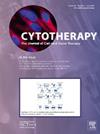ExoPTEN:异体外泌体治疗脊髓损伤具有强大的治疗潜力和临床前景
IF 3.7
3区 医学
Q2 BIOTECHNOLOGY & APPLIED MICROBIOLOGY
引用次数: 0
摘要
背景,AimNurExone的ExoPTEN是一种基于外泌体的疗法,代表了一种治疗脊髓损伤(SCI)的新方法。这种同种异体的现成疗法利用来自骨髓间充质干细胞(BM-MSCs)的外泌体递送一种专有的siRNA,靶向mTOR通路中的关键抑制剂PTEN。ExoPTEN具有可扩展和强大的制造工艺,具有显著的治疗潜力,有全面的临床前数据和强大的监管成就支持,包括孤儿药指定(ODD)和支持性的ind前反馈。方法采用脊髓全断和脊髓压迫两种大鼠脊髓损伤模型进行临床前研究。携带siRNA-PTEN的ExoPTEN通过鼻内和鞘内给药。通过MRI、BBB运动评分、von Frey感觉测试和免疫组织化学评估运动、感觉和结构恢复来评估疗效。通过跟踪大鼠荧光标记的外泌体来评估ExoPTEN的归巢能力。通过将生产从2D培养系统过渡到3D生物反应器来评估可扩展性。结果sexopten治疗显著改善了脊髓损伤大鼠的运动和感觉功能,并使其结构恢复。荧光标记证实,ExoPTEN成功地回到损伤部位,并在损伤后7天内停留在那里,建立了一个治疗窗口期。在从2D到3D生产的整个可扩展性中,工艺稳健性得以保持,在不同的BM供体和siRNA来源中具有一致的外泌体产量和功能。积极的临床前数据,以及孤儿药指定和FDA的支持性ind前反馈,证实了ExoPTEN的临床转化潜力。exopten为脊髓损伤提供了一种突破性的治疗选择,有强大的临床前数据支持,7天的治疗窗口期和监管支持。这种可扩展的多功能疗法专为临床使用而设计,具有加载各种治疗有效载荷的能力,并通过重复给药提供长期治疗。这些令人鼓舞的结果证明了ExoPTEN的临床潜力及其在其他神经再生条件下的适用性。本文章由计算机程序翻译,如有差异,请以英文原文为准。
ExoPTEN: Allogeneic Exosome Therapy for Spinal Cord Injury with Strong Therapeutic Potential and Clinical Promise
Background & Aim
NurExone's ExoPTEN, an exosome-based therapy, represents a novel approach for treating spinal cord injury (SCI). This allogeneic, off-the-shelf therapy utilizes exosomes derived from bone marrow mesenchymal stem cells (BM-MSCs) to deliver a proprietary siRNA targeting PTEN, a key inhibitor in the mTOR pathway. With a scalable and robust manufacturing process, ExoPTEN demonstrates significant therapeutic potential, backed by comprehensive preclinical data and strong regulatory achievements, including orphan drug designation (ODD) and supportive pre-IND feed back.
Methodology
Preclinical studies were conducted using two rat models of SCI: complete spinal cord transection and spinal cord compression. ExoPTEN, loaded with siRNA-PTEN, was administered via intranasal and intrathecal routes. Efficacy was evaluated through MRI, BBB motor scoring, von Frey sensory tests, and immunohistochemistry to assess motor, sensory, and structural recovery. The homing capacity of ExoPTEN was evaluated by tracking fluorescently labeled exosomes in rats. Scalability was evaluated by transitioning production from 2D culture systems to 3D bioreactors.
Results
ExoPTEN treatment led to significant improvement in motor and sensory functions in SCI rats, as well as structural recovery. Fluorescent labeling confirmed that ExoPTEN successfully homed to the injury site and remained there up to seven days post-injury, establishing a therapeutic window. Process robustness was maintained throughout the scalability from 2D to 3D production, with consistent exosome yields and functionality across different BM donors and siRNA sources. The positive preclinical data, along with orphan drug designation and supportive pre-IND feedback from the FDA, confirm ExoPTEN's potential for clinical translation.
Conclusion
ExoPTEN offers a groundbreaking therapeutic option for SCI, backed by robust preclinical data, a demonstrated seven-day therapeutic window, and regulatory support. This scalable, and versatile therapy is designed for clinical use, with the ability to load various therapeutic payloads and provide long-term treatment through repeated administration. These encouraging results demonstrate ExoPTEN's clinical potential and its applicability in additional nerve regeneration conditions.
求助全文
通过发布文献求助,成功后即可免费获取论文全文。
去求助
来源期刊

Cytotherapy
医学-生物工程与应用微生物
CiteScore
6.30
自引率
4.40%
发文量
683
审稿时长
49 days
期刊介绍:
The journal brings readers the latest developments in the fast moving field of cellular therapy in man. This includes cell therapy for cancer, immune disorders, inherited diseases, tissue repair and regenerative medicine. The journal covers the science, translational development and treatment with variety of cell types including hematopoietic stem cells, immune cells (dendritic cells, NK, cells, T cells, antigen presenting cells) mesenchymal stromal cells, adipose cells, nerve, muscle, vascular and endothelial cells, and induced pluripotential stem cells. We also welcome manuscripts on subcellular derivatives such as exosomes. A specific focus is on translational research that brings cell therapy to the clinic. Cytotherapy publishes original papers, reviews, position papers editorials, commentaries and letters to the editor. We welcome "Protocols in Cytotherapy" bringing standard operating procedure for production specific cell types for clinical use within the reach of the readership.
 求助内容:
求助内容: 应助结果提醒方式:
应助结果提醒方式:


